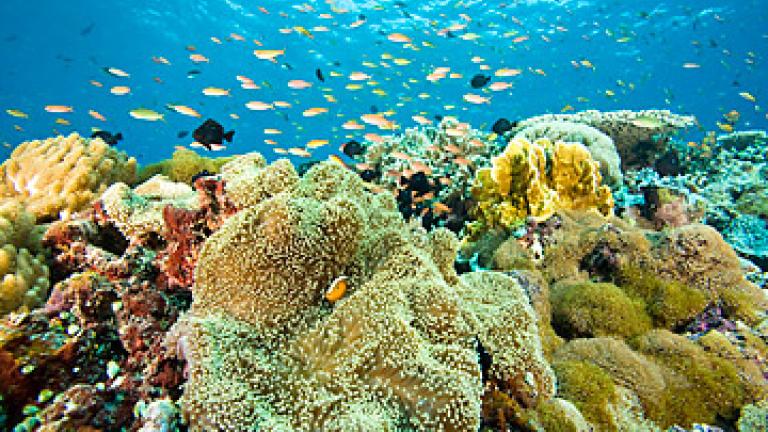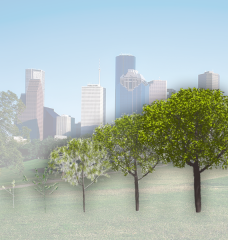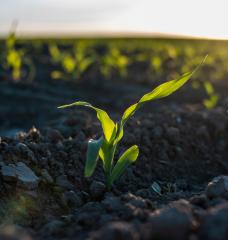
According to the latest research, our planet is facing a crisis of interest. On one hand, the extinction of species is at all-time high. On the other, the human population is growing at alarming rate, resulting in a mad scramble for resources and the development of new technologies and socio-economic and political structures to help organize a rapidly expanding society.
How do we reconcile the two? How do we make sense of the respective trajectories? Why do we need to care? These are some of the questions I hope to answer in my discussion on Biodiversity, a topic often over-shadowed by easily marketable issues such as Climate Change.
INTRODUCTION
Nature can never be viewed in isolation. The beauty and underlying principle of natural systems is that they are, as I said, systems. They are connected to one another, with each facet of the natural world, be it organic or inorganic, playing a role. Nature is cyclical, it’s webbed and it’s dynamic and the most remarkable result of this, is life itself. From the majestic Blue whale, to the smallest protozoa, to wide varieties of plants, insects and reptiles, nothing can fully prepare us for the sheer enormity of evolution. What we see today is the history of life on our planet, every mark made perfect through millions and millions of years of refinement.
A part of this process is extinction. Scientists believe there exists a natural rate of extinction of around 1-5 species a year. This gradual loss, regulated by the processes of natural and sexual selection, is one of the driving forces behind genetic diversity, both within and between different species. As a result, it is one of the driving forces behind the continuation of life.
There have, however, been periods in the Earth’s long history where catastrophic global events, such as rapid climate change, and natural disasters have led to the mass extinction of almost all life. The largest, was the Pembrian extinction, around 251 million years ago, which saw the loss of 96% of all species. Thankfully, these are few and sparse and have occurred in a period of the Earth’s life where it was at its most formative and volatile. Apart from a few geological catastrophes, like the Toba eruption in Sumatra, Indonesia, some 75,000 years ago, the Earth has managed to settle itself in a state of equilibrium, that has allowed life to eb and flow and evolve, particularly since the start of the Holocene, some 12,000 years ago.. That is, until now.
A DAY OF JUDGMENT
According to the WWF and verified by the general consensus of scientists, it seems that we are currently in the midst of the sixth great mass extinction. What’s worse, is that it seems to be our fault. Current predictions hold the extinction rate to be 1000 to 10,000 times the natural extinction rate. Taking even the lowest possible estimate of the number of species on the planet, we are looking at about 200-2000 species lost every year. If we calculate the same according to the highest number of predicted species, we are looking at figures that are catastrophic.
This isn’t the first time in history that human expansion has been cited as a reason for Mega-extinction. There is convincing evidence that migration out of Africa, into the Northern-hemisphere, North America, Australia and New Zealand as well as intrusions into isolated island systems have all been followed by a decrease in endemic species, in particular that of Mega-fauna [1]. Hunters are thought to have exposed these species to unprecedented predation at a time where climatic stress due to the recession of the Pleistocene was already burdening faunal populations [2].
Now, due to the dynamism of interlinked systems, small changes, especially to the populations of certain Key-stone species, lead to a gradual adoption of chaotic tendencies and the vacation of certain ecological niches. This continues until a set of new parameters are randomly selected from the possible bifurcating paths and species adapt and evolve to their new environments [3]. This allows the planet to account for deviations over large periods of time. Thus, our early ventures were balanced by the planet’s own corrective measures and our ability to bring in lasting change was limited.
Today, however, we are simply not giving the planet that kind of time to recuperate. Wildlife and biodiversity are not only impacted by hunting and illegal poaching, our entire economy is balanced upon the need to exploit natural resources, create waste and increase urbanization and production. By selectively allowing certain species to thrive due to their commercial value, we have created a self-propagating system in which any deviation is unsustainable for most people. The roots of this lie far back in History, with the domestication of animals and the development of agriculture, near the beginning of the Holocene [4]. The colonial period is worth noting, as hundreds of alien species were introduced for purposes of trade or ornamentation. In the case of Lantana Camara or Wild-sage, introduced by the British in Calcutta in 1786 [5], it has been able to displace local species and cause serious problems in large parts of South-Asia.
There is however a difference between unintentionally releasing an invasive species, and actively promoting the spread of one, as in the case of Borneo where large swathes of the rainforest, the oldest on the planet, is being systematically felled in order to plant Oil Palm. From this, Palm Oil is extracted, a valuable commodity that goes into a variety of consumer goods. Its cost to the environment is staggering. The rainforest is home to an incredibly rich variety of species, most of which are now severely threatened by the encroaching plantations which simply cannot provide the kind of sustenance needed to maintain a habitat as rich as that of Borneo’s.
HOW DOES IT MATTER?
Eco-systems allow for the maintenance of critical geo-physical processes such as the hydrological, nitrogen and carbon cycles, as well as things like carbon sequestration and other biochemical procedures that regulate pH levels and the overall flow of energy through a system. These cycles are essential to the survival of life on the planet.
But every ecosystem has a threshold up till which it can maintain its functioning. The ability of an ecosystem to withstand variable shocks and stresses over time is known as it’s resilience and Biodiversity plays a big role in making sure that this resilience exists. Biodiversity refers to three things, namely: Ecosystem diversity, species diversity and genetic diversity. The first refers to the variation amongst different ecosystems, the second concerns itself with that of the variation between species and third accounts for the genetic difference within members of the same species. It has been largely verified, that species richness contributes greatly to the stability of biochemical reactions and the flow of energy throughout an ecosystem [3]. Not only because of the way they cycle inorganic and organic material, but also because there is redundancy within the system, in which multiple species perform a similar role, allowing disruption to be kept at a minimum when one such species is lost or depleted. Genetic variation, however, is also incredibly important. With a decrease in the population of a species, a genetic bottleneck is created. Low degrees of genetic variation lead the species to be vulnerable in the same way that an ecosystem is made vulnerable by a loss of species richness: there simply isn’t enough variation to allow for survival and subsequent evolution in the face of a disrupting shock.
This is especially important to understand, given that we are increasingly facing the prospect of accounting for the lack of a natural balance as species begin to die out. Beyond the microscopic, certain key-stone species have disproportionate effects on their environment, and the loss of those will lead to massive anomalies in the system, such as the explosion of prey species that were otherwise being controlled. For example, Insects- which act as food, pollinators and recyclers of nutrients- are rapidly approaching critical levels of loss, with studies showing that up to 41% of insect species have gone extinct in the last decade, heralding catastrophic results for the environment. Their loss will send shockwaves up the food chain, prompting the extinction of many species that are interdependent, both flora and fauna alike [6]. This occurrence is known as a trophic cascade, and given that we, as a naturally occurring species of the planet are part of the food web, it will come for us too.
INVASIVE SPECIES
Humans have been transporting stray species for millennia, either accidentally or purposefully. Like mentioned before, this could either be in the form of species useful to humans, like livestock, wheat or Oil Palm, or it could be accidental hitchhikers like rats, parasites, bacteria, birds or ants. Some species are also taken for ornamentation like the aforementioned Lantana Camara or even our dogs and cats, which can quickly breed or can carry pests with them. When a species is first introduced, it is termed ‘alien’ or ‘foreign’. Should it however, prove itself to be able to survive on its own and thrive in its new environment at the cost of native species, it termed ‘Invasive’. Such invasive species are the second largest threat to Biodiversity and wildlife after that of habitat destruction. They often spread in areas that have climatic conditions similar to that of their native regions and usually have no natural predators upon arrival, leading to them growing in a rapid and unchecked manner [7]. It is said that one in ten of introduced species can eventually be found in the wild. One-tenth of that will be naturalised and a further one-tenth will grow to become invasive [8].
One of the best examples of this on a global scale is that of the Argentine Ant, which has hitch-hiked on Human transportation systems for the last two centuries and now forms one of the largest populations on the planet. It drives out local ants’ species, kills the native arthropods and disrupts the local flora, leading to an eventual collapse of the ecosystem [9].
Islands are particularly susceptible to these kinds of invasions. Given their isolation, a lot of the biodiversity is endemic, being found nowhere else and exists in a fragile balance not used to shocks. When an alien species arrives, it is possible for it to quickly become invasive in such a solitary environment, disrupting the entire ecosystem, due to the lack of natural predators. Indeed, invasive species are often found to exhibit different characteristics to specimens from their native regions, as a result of adapting to environments with lower biotic and abiotic stresses [8].
WHERE DO WE STAND?
What fascinates me most is the way we choose to conceptualize our relationship with nature. We are always outside nature. It is a foreign land, a distant cousin that we have no real association with beyond its value for us, either as a resource or something to be marvelled at. Our relationship with life itself is incredibly strange. Wildlife and the organic components of biodiversity are as alive as any single member of the human species and yet their death is one we are persistently able to overlook.
This mass extinction clearly has anthropogenic causes, with almost everything we do, somehow contributing to the same. Whilst I could go on to detail the ways by which we propagate this, I firmly believe that there is only one blanket factor that envelops all others. The un-restricted growth of human population.
If we see ourselves to be natives of Africa by descent, then we are the single worst invasive species to have ever existed. We have colonized every single continent and have single-handedly led the sixth mass extinction and the defilement of every natural reservoir. With the increase in our population, we have increased our need for space and our capacity for waste production far beyond the natural limits. It is no real stretch to say that we are essentially a plague and we seek to now move on to other planets, without any semblance of responsibility for what we choose to leave behind.
I put forward the idea that the only way in which we can truly treat the issue of wildlife extinction and biodiversity loss is to accept our vested interest. Biodiversity matters, because it is essential to our survival. Will we ever be able to completely eradicate our impact on the planet? No, as resource usage and competition are inherent in the behaviour of every species. That being said, a balance must be struck.
We must fundamentally alter the way we perceive ourselves, each other and the environment, promoting radical transformations in the method and scale of production, avenues of demand and in the global political economy. Even then, it may still be too late. It is necessary, to set clear measures, not only for the immediate redressal of the issues, but also for further research into the markers of stress in ecosystems and the role of species in each ecosystem, so as to set clear boundaries within which human activity can take place without causing further harm. That being said, someone will eventually have to take responsibility for advocating this. The processes by which information paradigms are generated will have to be called upon once again. Should we choose to go this way, the looming threat of over-population will need to be addressed.
Bibliography
[1] Choquenot, David, and D. M. J. S. Bowman. “Marsupial Megafauna, Aborigines and the Overkill Hypothesis: Application of Predator-Prey Models to the Question of Pleistocene Extinction in Australia.” Global Ecology and Biogeography Letters, vol. 7, no. 3, 1998, pp. 167–180.
[2] Epp, Henry T. “Human Effect: Dynamical Extinction-Expansion Process.” Canadian Journal of Archaeology / Journal Canadien d’Archéologie, vol. 14, 1990, pp. 93–105.
[3] Allgeier, Jacob E., et al. “Biogeochemical Implications of Biodiversity and Community Structure across Multiple Coastal Ecosystems.” Ecological Monographs, vol. 85, no. 1, 2015, pp. 117–132.
[4] Zeder, Melinda A. “Domestication and Early Agriculture in the Mediterranean Basin: Origins, Diffusion, and Impact.” Proceedings of the National Academy of Sciences of the United States of America, vol. 105, no. 33, 2008, pp. 11597–11604.
[5] Ramesh Kannan, Charlie M. Shackleton and R. Uma Shaanker, “Reconstructing the history of introduction and spread of the invasive species, Lantana, at three spatial scales in India.” Biological Invasions, vol. 15, no. 6, 2013, pp. 1287-1302.
[6] Francisco Sánchez-Bayo and Kris A.G. Wyckhuys, “Worldwide decline of the entomofauna: A review of its drivers.” Biological Conservation, vol. 232, 2019, pp. 8-27
[8] Giraud, Tatiana et al. “Evolution of supercolonies: the Argentine ants of southern Europe.” Proceedings of the National Academy of Sciences of the United States of America vol. 99,9 (2002): 6075-9.
Photo courtesy Stuart Westmorland/ Design Pics/ Corbis-TIME Magazine





